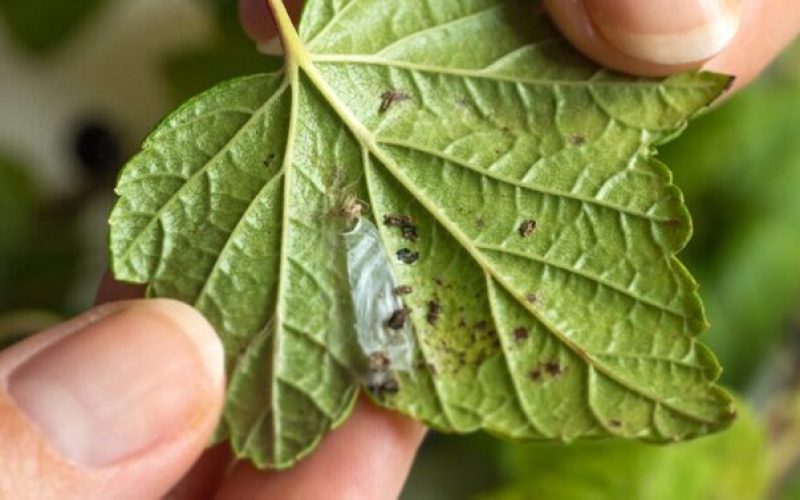Organic farming is all about growing food in ways that are good for both the environment and our health.
It avoids using synthetic chemicals to manage crop diseases, which makes the utilization of natural disease prevention methods important.
But is this possible?
It is, but it is not as simple as it may sound.
Let’s talk about it in greater detail.
Cultural Practices for Disease Prevention
There are two main methods that can help with disease prevention:
- Crop rotation
- Intercropping
Crop Rotation
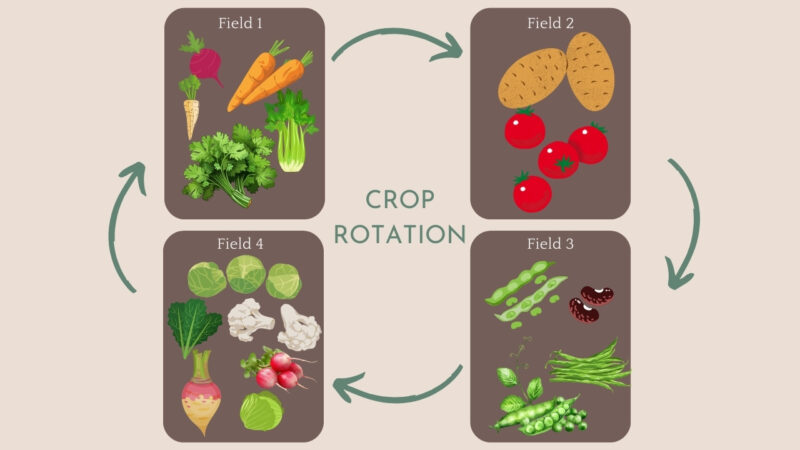
Crop rotation is a fundamental agricultural practice that involves alternating the species or families of crops grown on the same land to prevent the accumulation of pathogens.
It helps break the life cycles of pests and diseases, reducing the reliance on chemical interventions.
Effective strategies include planning crop sequences based on host susceptibility, ensuring that crops following each other are unrelated, and incorporating cover crops to enhance soil health.
Intercropping
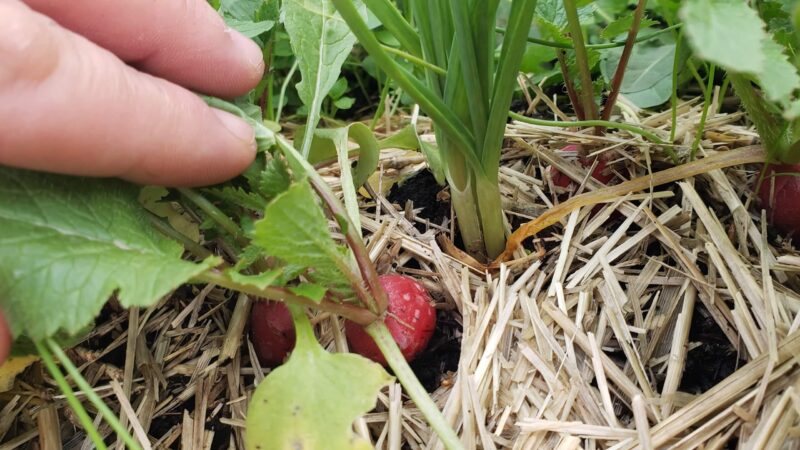
Intercropping, the practice of growing two or more crops in proximity, can significantly mitigate disease spread by disrupting the environment pathogens thrive.
Intercropping often improves soil structure and increases biodiversity, leading to healthier ecosystems and enhanced natural disease resistance.
The diversity creates a barrier and reduces the spread of diseases specific to one crop. For example: Planting garlic among tomatoes can prevent fungal infections common to tomatoes by naturally repelling certain pathogens.
The Role of Resistant Varieties
Developing and planting disease-resistant crop varieties is a crucial method of disease prevention.
These varieties are bred with specific traits that enable them to withstand infections, reducing the need for chemical treatments. Farmers should choose varieties that are resistant or tolerant to prevalent diseases in their region.
Implementing resistant varieties as a part of an integrated disease management strategy can significantly reduce crop losses and improve yield stability.
Soil Management
Healthy soil is the foundation of a productive farm. Practices such as adding organic matter, maintaining proper pH, and encouraging beneficial microbial activity can enhance soil health and suppress disease organisms.
Regular soil testing and amendments based on the results help in maintaining optimal soil conditions. Minimizing soil compaction and ensuring adequate drainage can prevent waterlogging, which often exacerbates soil-borne diseases.
Environmental Management
Environmental management in agriculture involves modifying physical conditions to minimize disease risks. Here are some of the commonest ways to do it:
| Practice | Description | Benefits |
|---|---|---|
| Optimizing Planting Dates | Aligns planting with optimal weather conditions. | Reduces disease risk and environmental stress. |
| Adjusting Plant Density | Manages spacing to improve air and light access. | Decreases humidity and disease outbreaks. |
| Controlling Irrigation | Utilizes efficient irrigation to maintain ideal moisture. | Promotes healthy growth and minimizes stress. |
| Planning and Implementation | Ensures strategies manage extreme conditions effectively. | Increases crop resilience and sustainability. |
Importance of Temperature and Moisture Control

Controlling temperature and moisture levels is vital for disease prevention.
Many pathogens thrive in specific temperature and humidity ranges, and managing these environmental factors can limit their growth.
Techniques such as using plastic mulches, applying water at times that reduce leaf wetness, and using climate-controlled greenhouses can effectively manage these elements.
Site Selection
Choosing the right site for planting is crucial in disease management. Factors like the history of the land, prevailing winds, sunlight exposure, and proximity to water bodies can influence disease prevalence.
Sites should be selected based on their natural drainage and exposure to adequate sunlight to minimize the conditions conducive to disease outbreaks.
Sanitation and Hygiene in the Field
Field hygiene is one of the most important things in disease prevention. Of course, it is a complex process, and an individual who is about to conduct it should be aware of all the factors that play a role.
Removing Plant Residues and Controlling Volunteer Plants
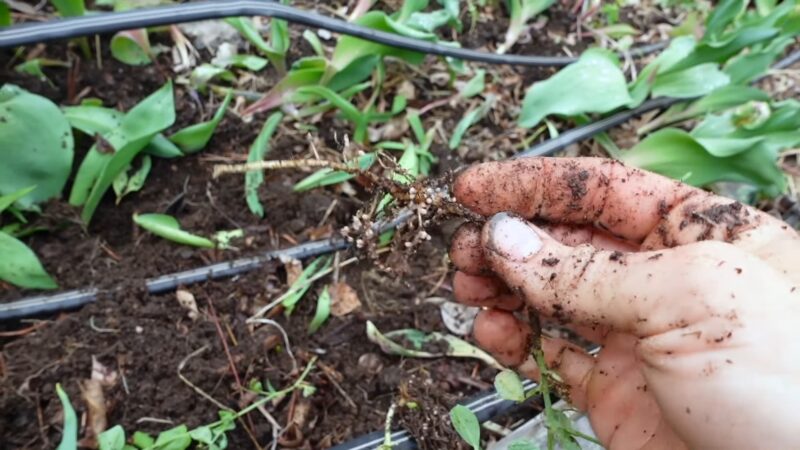
Post-harvest field sanitation is crucial for preventing disease carryover to the next growing season.
Removing plant residues and controlling volunteer plants helps eliminate potential sources of pathogens.
Burning or composting infected plant debris under controlled conditions can effectively reduce the pathogen load in the field.
Sanitation Practices to Prevent Pathogen Spread
Implementing strict sanitation practices, such as cleaning tools and machinery, can prevent the spread of pathogens across different field sections.
Disinfectants should be used regularly on equipment, and workers should follow hygiene protocols to avoid introducing or spreading diseases.
Importance of Clean Seed
Using certified clean seeds is one of the most effective ways to prevent diseases.
Seeds should be sourced from reputable suppliers and treated, if necessary, to eliminate seed-borne pathogens.
Biological and Mechanical Control Methods
Biological control involves using living organisms such as beneficial insects, nematodes, or microorganisms to combat pests and diseases.
For instance:
Introducing ladybugs to control aphids or using Bacillus thuringiensis (Bt) to manage caterpillar populations are effective strategies.
On the other side, mechanical methods like mulching, mowing, and flame-weeding help manage weeds and diseases without the use of chemicals. Mulches prevent weed growth and reduce fungal spores splashing onto plants from the soil.
Flame-weeding can be used to quickly eliminate weeds without residual chemicals, reducing the habitat for disease vectors.
Using These Methods Effectively
Timing and technique are crucial for the success of biological and mechanical controls. For example, releasing beneficial insects should align with the pest’s life cycle for maximum impact. Mechanical controls should be applied before weed or disease outbreaks become unmanageable.
Chemical Controls in Organic Farming
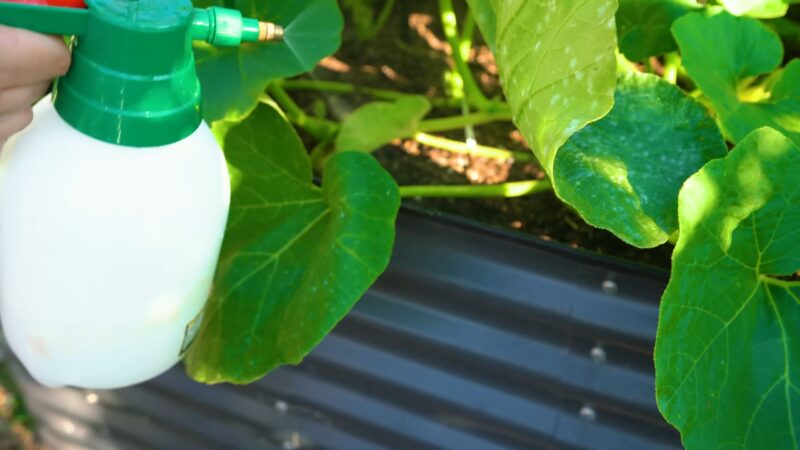
Organic farming restricts the use of synthetic chemicals, but certain natural products are permitted for disease control.
These include substances like copper and sulfur-based compounds, neem oil, and biopesticides derived from natural organisms.
Familiarity with the National Organic Program’s (NOP) list of approved substances is essential for compliance and effective disease management.
Applying Organic-Approved Pesticides
Organic pesticides vary greatly in how they affect target pests and diseases. Some might inhibit fungal growth while others may deter pests through olfactory or taste aversion.
The selection process must consider the environmental impact and effectiveness of the pesticide, ensuring it aligns with broader organic farming practices. Proper application techniques are equally important to ensure safety and effectiveness.
It includes understanding how and when to apply the pesticide to maximize its efficacy while minimizing risks to the crop, beneficial insects, and the surrounding environment.
Handling and Application
The handling and application of organic pesticides require careful attention to detail to protect both crop health and the environment. Key considerations include:
- Proper Dosage: Applying the correct amount of pesticide is critical.
- Timing: The timing of pesticide application can significantly influence its effectiveness.
- Application Methods: Techniques that reduce pesticide drift are crucial.
Farmers must also ensure that the conditions under which they apply pesticides do not lead to off-target effects, such as contamination of nearby water bodies or non-target vegetation.
The Bottom Line
Disease prevention in organic farming is a massive subject with a lot of elements that need to be researched thoroughly.
I just scratched the surface with this insight of mine, so that you can see the main points to follow.
Harley Wilson, from Vermont, carries on a family legacy of organic farming, with a focus on supporting pollinators. Inherited his farm from his grandfather, his dedication to the land Harley also teaches his children the value of hard work through hard work.

